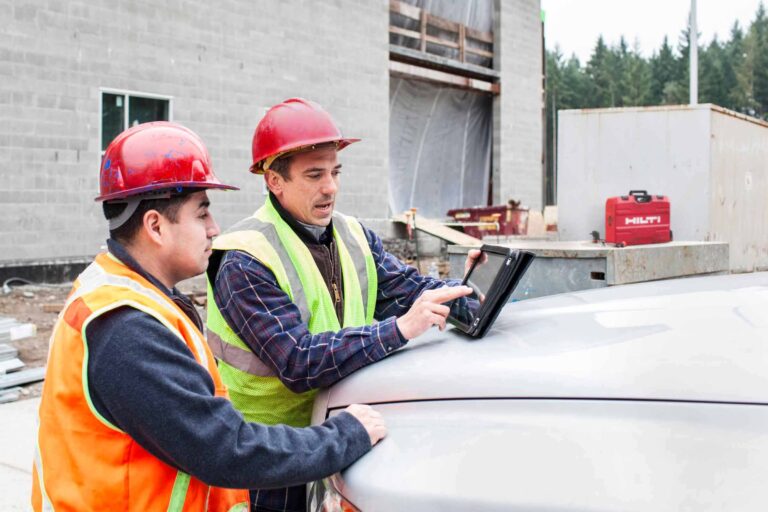
The construction industry is rapidly evolving, and technology is at the heart of this transformation. Construction management software (CMS) has grown from basic scheduling and budgeting tools to comprehensive platforms integrating artificial intelligence (AI), the Internet of Things (IoT), and cloud computing. These advancements enable construction professionals to work more efficiently, reduce costs, and improve project outcomes. As construction projects become more complex, the need for advanced technology becomes even more critical. Companies that fail to adopt these innovations risk falling behind competitors who leverage digital tools to optimise operations. The integration of cutting-edge technology into CMS is not merely a trend—it is a necessity for long-term success.
To stay competitive, companies must embrace the latest technological trends that are shaping the future of construction management software. From real-time collaboration to sustainability tracking, these innovations improve every aspect of construction projects, from inception to completion. This blog explores the most impactful trends and how they can help future-proof your projects, ensuring efficiency, accuracy, and scalability.
1. Artificial Intelligence and Machine Learning
Artificial intelligence (AI) and machine learning (ML) are transforming construction management software by automating processes, optimising decision-making, and predicting potential issues before they arise. AI-driven tools can process vast amounts of data at a speed impossible for humans, making them invaluable for project managers aiming to enhance productivity and minimise risk.
One of the most significant contributions of AI in construction management is risk prediction and mitigation. AI systems analyze historical data to identify common patterns that contribute to project delays, cost overruns, or safety hazards. By leveraging predictive analytics, construction managers can proactively address potential problems before they escalate. For example, AI can flag projects that are at risk of exceeding budgets based on past trends, allowing teams to make cost-saving adjustments before it’s too late.
Additionally, machine learning automates routine administrative tasks such as document processing, compliance tracking, and report generation. This automation reduces manual work, freeing up valuable time for project managers to focus on strategic planning and execution. AI-powered tools can also provide insights into labor productivity, material usage, and project efficiency by analyzing real-time data collected from construction sites. These insights help teams make informed decisions, leading to better resource allocation and improved project timelines.
AI also enhances communication by utilising natural language processing (NLP) to interpret and streamline project documentation. AI-driven chatbots and virtual assistants can assist with answering project-related queries, scheduling meetings, and even automating procurement processes. The continued advancement of AI in construction management software will lead to smarter, more efficient projects that are completed on time and within budget.
2. Cloud-Based Collaboration and Data Management
Cloud-based construction management software has revolutionised the way teams collaborate and access project data. Unlike traditional on-premise software that requires manual updates and localised storage, cloud solutions provide real-time data access and seamless integration across multiple devices. This allows teams to work from anywhere, improving efficiency and ensuring that all stakeholders have the most up-to-date information.
One of the most significant advantages of cloud-based platforms is real-time collaboration. Construction projects involve numerous stakeholders, including architects, engineers, contractors, and clients, all of whom need access to critical project information. Cloud solutions eliminate the need for manual document transfers and outdated spreadsheets by ensuring that everyone is working with the latest version of project files. This minimises the risk of miscommunication and prevents costly errors caused by outdated information.
Another benefit of cloud-based CMS is scalability and flexibility. Whether managing a small residential project or a large-scale commercial development, cloud platforms can be tailored to suit the needs of different projects. Companies can scale their software usage based on project demands, avoiding unnecessary expenses associated with purchasing and maintaining additional hardware. Furthermore, cloud-based solutions are equipped with robust security measures, including encryption and multi-factor authentication, ensuring that sensitive project data is protected from cyber threats.
Data centralisation is another key feature of cloud-based construction management software. All project-related information, including blueprints, contracts, and progress reports, is stored in a single secure location. This reduces the risk of data loss due to misplaced documents or system failures. Additionally, cloud-based systems integrate with mobile applications, allowing field workers to upload real-time updates from job sites, further enhancing efficiency and transparency.
3. Building Information Modeling (BIM) Integration
Building Information Modeling (BIM) has become an essential tool in modern construction management. BIM technology creates a digital representation of a building’s physical and functional characteristics, allowing for enhanced project planning and collaboration. When integrated with CMS, BIM provides significant benefits in terms of design coordination, clash detection, and lifecycle management.
One of the most significant advantages of BIM integration is improved design coordination. Traditionally, architects, engineers, and contractors worked on separate design files, often leading to inconsistencies and misalignments. BIM enables all stakeholders to collaborate on a single, centralised model, ensuring that designs are accurate and aligned before construction begins. This reduces costly design conflicts and rework, ultimately saving time and resources.
Clash detection is another crucial benefit of BIM. Advanced BIM software can identify clashes between structural, mechanical, and electrical components before they are installed. For example, if an HVAC duct is mistakenly designed to pass through a load-bearing wall, BIM will flag the issue before construction begins, allowing teams to make necessary adjustments. This proactive approach minimises disruptions during the construction phase and prevents expensive delays.
Beyond the construction phase, BIM also supports lifecycle management. By linking BIM data with CMS, project managers can track the entire lifespan of a building, from design and construction to maintenance and renovations. This ensures that facility managers have access to detailed records, improving maintenance efficiency and extending the longevity of the structure.

4. The Internet of Things (IoT) in Construction Management
The Internet of Things (IoT) is reshaping construction management by connecting equipment, workers, and project data in real time. IoT sensors integrated with CMS provide valuable insights that enhance monitoring, safety compliance, and productivity tracking.
IoT technology plays a vital role in worker safety. Smart wearables, such as helmets and vests equipped with sensors, can monitor workers’ health conditions and detect hazardous environments. These devices provide real-time alerts in case of temperature extremes, toxic gas exposure, or fatigue-related risks, allowing for immediate intervention. This proactive approach reduces workplace accidents and ensures compliance with safety regulations.
In addition to worker safety, IoT enables remote monitoring of construction sites. Sensors installed on heavy machinery can track equipment usage, detect maintenance needs, and prevent unexpected breakdowns. This minimises downtime and helps construction firms optimise resource allocation. Similarly, IoT-powered inventory management systems monitor material usage and automatically reorder supplies when stock levels run low, preventing delays due to material shortages.
IoT-generated data provides valuable insights into site performance, allowing project managers to make data-driven decisions. By analyzing real-time data, managers can identify inefficiencies, adjust schedules, and allocate labor more effectively. The integration of IoT with CMS ensures that construction projects run smoothly, reducing delays and improving overall project outcomes.
The future of construction management software is being shaped by transformative technologies that improve efficiency, collaboration, and sustainability. Companies that embrace AI, cloud computing, BIM, IoT, blockchain, AR/VR, robotics, and green technology will be better positioned for long-term success. By integrating these advancements into CMS, construction firms can streamline operations, reduce costs, and enhance project outcomes. As technology continues to evolve, staying ahead of these trends will be critical for firms that wish to remain competitive in the ever-changing construction landscape.
In today’s construction landscape, efficiency and accuracy are paramount. Construction management software, like Wunderbuild, revolutionises project handling by centralising tasks, from scheduling and budget management to communication and document control. This integration enhances productivity and ensures projects are completed on time and within budget, making it an essential tool for modern construction professionals. Embrace Wunderbuild here to begin streamlining your construction processes and boost your project’s profitability.




